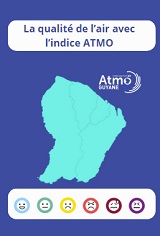Blada.com
samedi 18 mai
Boîtes aux lettres
Courrier des lecteurs
Petites annonces
Emploi / Formation
Covoiturage
Infos citoyennes
Infos citoyennes
01/12/20
Une « feuille de route » à définir pour le CHU ?
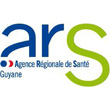
En août et septembre, le Dr Guillaume Icher, pharmacien de formation, est venu en Guyane pour aider à l’ARS lors de la crise Covid-19. Un mois plus tard, il est revenu pour soutenir les travaux de préfiguration du centre hospitalier universitaire. Une mission qu’il mène au contact des professionnels de santé du territoire.
Dans quelles circonstances êtes-vous arrivé en Guyane pour cette mission de préfiguration d’un centre hospitalier universitaire (CHU) ?
J’ai effectué une première expérience en Guyane dans le cadre du renfort Covid. J’ai beaucoup apprécié le territoire et les équipes avec lesquelles j’ai travaillé. J’ai eu envie de revenir pour contribuer au développement de l’offre de soins. Alors quand un poste a été ouvert à l’ARS pour soutenir la création du CHU, je me suis dit que c’était une superbe opportunité ! Je connais bien le milieu de la santé et la gouvernance universitaire, et ce projet est enjeu structurel pour la Guyane.
 Pouvez-vous nous rappeler ce qu’est un CHU ?
Pouvez-vous nous rappeler ce qu’est un CHU ?
Un CHU, par définition, c’est d’abord un centre hospitalier régional (CHR) et c’est cette première étape que nous devons franchir en Guyane. Les centres hospitaliers régionaux sont des hôpitaux qui, selon la loi, ont une « vocation régionale liée à leur haute spécialisation ».
Avoir une vocation régionale cela veut dire être capable d’assumer la plupart des soins dont a besoin la population, sans devoir recourir à des expertises ou prises en charges extérieures à la région. Il faut donc essayer de « rapatrier » la compétence et la capacité de soins sur le territoire guyanais, pour les besoins de santé qui font aujourd’hui l’objet des plus fréquentes évacuations sanitaires.
Un CHR peut être multisite, c’est-à-dire que plusieurs hôpitaux peuvent s’associer pour démontrer que, ensemble, ils parviennent à répondre à la plupart des besoins de soins hautement spécialisés de la population.
Une fois que le CHR est constitué, et reconnu par décret, alors il peut conventionner avec une Université de médecine. Cela devient un CHR&U, que l’on appelle communément CHU.
Le projet de CHU de Guyane c’est donc d’abord un projet de développement de l’offre de soin ?
Ce n’est pas seulement un projet de soins, mais c’est d’abord un projet de soin en effet. Il appartient aux équipes hospitalières de faire le point sur l’offre déjà présente en Guyane et sur les 3 ou 4 offres qui manquent le plus. Il s’agit pour ces équipes de concevoir, ensemble, une stratégie de développement qui permette rapidement de combler les manques les plus flagrants, en examinant notamment la nature des évacuations sanitaires.
Un CHU c’est aussi bien sûr un projet universitaire, un travail pour renforcer notamment l’attractivité de l’internat en Guyane, faire que les futurs médecins aient envie de se former en Guyane, à l’hôpital mais aussi en ville.
C’est aussi un travail sur la recherche en santé, pour mieux la faire connaître, la valoriser et la consolider.
 Avec qui allez-vous travailler sur ce projet ?
Avec qui allez-vous travailler sur ce projet ?
Je vais échangez avec tous les acteurs guyanais, de la santé et de l’université, qui sont très mobilisés et ont beaucoup d’idées. Il ne s’agit pas seulement des médecins, les paramédicaux sont aussi directement concernés par ce projet et par le développement de l’offre de formation et de recherche sur le territoire. Je m’intéresse aussi tout particulièrement aux internes, les médecins de demain, pour comprendre leurs attentes et accompagner leur structuration.
Nous allons naturellement nous appuyer sur les recommandations de la mission d’inspection IGAS, IGA, IGESR pour définir ensemble la feuille de route et ne pas nous éparpiller. Il nous faut « monter en gamme » en priorité sur l’offre de soin fragile ou manquante, afin de présenter un projet de CHR crédible, que nous pourrons concrétiser en quelques années seulement.
Qui avez-vous déjà rencontré depuis votre prise de poste début novembre ?
J’ai déjà pu commencer à échanger avec plusieurs acteurs du GHT (groupement hospitalier de territoire) en particulier les directeurs des centres hospitaliers de Cayenne et de Kourou, bientôt celui du Chog. J’ai aussi fait connaissance avec une partie de la communauté médicale hospitalière, en particulier le Pr Djossou, président du Collège médical du GHT de Guyane, les Pr Coupié et Nacher, qui sont à la fois à l’hôpital et à l’université. Enfin, j’ai eu plaisir à rencontrer une première fois certains médecins libéraux, à travers le « Groupe contact » qui se tient régulièrement avec l’ARS.
J’ai aussi participé à l’accueil de la nouvelle promotion d’internes, qui est arrivée début novembre. Je les encourage à créer une association pour que nous ayons des interlocuteurs pour avancer et mieux comprendre leurs besoins.
Le développement de l’internat vous tient à cœur. Pourquoi ?
On compte sur les internes pour être proactifs dans cette démarche de CHU. On va les consulter, les associer. Si leur internat se passe bien en Guyane, s’ils ont de bonnes conditions d’accueil et de bonnes conditions pédagogiques, ils sont susceptibles de rester au moins sur le moyen terme pour exercer et transmettre les savoir qu’ils ont acquis à leurs successeurs. Ils peuvent nous aider à ouvrir des terrains de stage, à évaluer les stages, pointer quand il y a des choses à améliorer, nous faire remonter leurs difficultés, même non médicales. Il faut les mettre à l’aise le plus vite possible quand ils arrivent en Guyane, qu’ils ne « subissent » pas la Guyane et qu’ils s’y épanouissent pleinement.
En quoi les professionnels de santé libéraux peuvent-ils se sentir concernés par le CHU ?
Le CHU est concerné par la montée en gamme de l’offre ambulatoire, par le lien entre les professionnels de santé, par la prise en charge du patient soit avant son entrée à l’hôpital, soit à sa sortie. On doit aussi progresser dans ce domaine-là : comment collaborent les professionnels de l’hôpital et de la ville ? Comment un patient adressé à l’hôpital par un professionnel de ville est-il accueilli ? Comment son médecin est tenu au courant de la prise en charge hospitalière ? Comment sa sortie de l’hôpital est-elle préparée avec les équipes de soin de proximité ? Les libéraux, mais aussi les professionnels en CDPS sont des acteurs clés dans le développement de la qualité et la diversité de l’offre de soins en Guyane.
Votre mission signifie-t-elle que, quoi qu’il arrive, le CHU se fera ? Ou peut-elle aboutir à la conclusion que ce n’est pas la bonne solution ?
J’ose espérer que c’est un projet qui aboutira au cours des toutes prochaines années. J’ose espérer qu’on saura démontrer que les hôpitaux de Guyane auront rapidement le niveau d’un CHR et que l’Université pourra aussi de son côté créer un premier cycle d’études médicales. Car l’objectif n’est pas juste de changer les panneaux à l’entrée d’un centre hospitalier. J’y crois mais ça va demander beaucoup de travail. J’y crois et l’ARS y croit, sinon je ne serai pas venu.
In August and September, Dr Guillaume Icher, a pharmacist by training, came to French Guiana to help the ARS during the Covid-19 crisis. A month later, he returned to support the prefiguration work for the university hospital center. A mission that he carries out in contact with health professionals in the area.
Under what circumstances did you arrive in French Guiana for this mission to prefigure a university hospital center (CHU)?
I carried out a first experience in French Guiana as part of the Covid reinforcement. I really enjoyed the territory and the teams I worked with. I wanted to come back to help develop the healthcare offer. So when a position was opened at ARS to support the creation of the CHU, I thought to myself that it was a great opportunity! I am familiar with the health sector and university governance, and this project is a structural issue for French Guiana.
Can you remind us what a CHU is?
A CHU, by definition, is first and foremost a regional hospital center (CHR) and it is this first step that we must take in French Guiana. Regional hospitals are hospitals which, according to the law, have a "regional vocation linked to their high specialization".
Having a regional vocation means being able to provide most of the care needed by the population, without having to resort to expertise or support from outside the region. We must therefore try to "repatriate" the competence and the capacity for care in French Guiana, for the health needs which are today the subject of the most frequent medical evacuations.
A RHC can be multisite, meaning that several hospitals can work together to demonstrate that, together, they are able to meet most of the population's highly specialized care needs.
Once the CHR is constituted, and recognized by decree, then it can enter into an agreement with a University of Medicine. It becomes a CHR & U, commonly known as CHU.
So the French Guiana University Hospital project is first and foremost a project to develop the healthcare offer?
It is not only a care project, but it is first and foremost a care project indeed. It is up to the hospital teams to take stock of the offer already present in French Guiana and the 3 or 4 offers that are most lacking. It is for these teams to design, together, a development strategy that quickly makes it possible to fill the most glaring gaps, in particular by examining the nature of medical evacuations.
A CHU is of course also a university project, a work to strengthen in particular the attractiveness of the boarding school in French Guiana, to make future doctors want to be trained in French Guiana, at the hospital but also in town .
It is also a work on health research, to make it better known, to promote and consolidate it.
Who will you be working with on this project?
I will discuss with all Guianese actors, health and university, who are very mobilized and have many ideas. It is not only doctors, paramedics are also directly concerned by this project and by the development of training and research in the region. I am also particularly interested in interns, the doctors of tomorrow, to understand their expectations and support their structuring.
We will naturally rely on the recommendations of the IGAS, IGA, IGESR inspection mission to jointly define the roadmap and not to scatter ourselves. We need to "go upmarket" as a priority over the fragile or missing care offer, in order to present a credible CHR project, which we can achieve in just a few years.
Who have you met since taking up your post in early November?
I have already been able to start discussing with several actors from the GHT (regional hospital group), in particular the directors of the Cayenne and Kourou hospitals, soon to be the Chog one. I also got to know part of the hospital medical community, in particular Pr Djossou, president of the Medical College of the GHT of French Guiana, Pr Coupié and Pr Nacher, who are both at the hospital and at the university. Finally, I had the pleasure of meeting certain liberal doctors for the first time, through the "Contact Group" which meets regularly with the ARS.
I was also involved in welcoming the new class of boarders, which arrived in early November. I encourage them to create an association so that we have interlocutors to move forward and better understand their needs.
The development of the boarding school is important to you. Why ?
We count on interns to be proactive in this CHU approach. We will consult them, associate them. If their boarding school goes well in French Guiana, if they have good reception conditions and good teaching conditions, they are likely to stay at least in the medium term to exercise and pass on the knowledge they have acquired to their students. successors. They can help us open internship sites, evaluate internships, point out when there are things to improve, let us know about their difficulties, even non-medical ones. They need to be put at ease as quickly as possible when they arrive in French Guiana, so that they do not "endure" French Guiana and that they fully develop there.
How can liberal health professionals feel concerned by the CHU?
The CHU is concerned by the move upmarket of the outpatient offer, by the link between health professionals, by the care of the patient either before entering the hospital or upon discharge. We must also make progress in this area: how do hospital and city professionals collaborate? How is a patient referred to the hospital by a city professional received? How is his doctor kept informed of hospital care? How is his discharge from the hospital prepared with the local care teams? Liberals, but also CDPS professionals are key players in the development of the quality and diversity of the healthcare offer in French Guiana.
Does your mission mean that whatever happens, the CHU will happen? Or can she come to the conclusion that this is not the right solution?
I hope this is a project that will come to fruition over the next few years. I hope that we will be able to demonstrate that hospitals in French Guiana will quickly reach the level of a CHR and that the University will also be able to create an undergraduate medical study. Because the goal is not just to change the signs at the entrance to a hospital center. I believe in it but it's going to take a lot of work. I believe it and the ARS believes it, otherwise I wouldn't have come.
Raccourcis

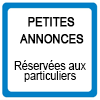
passer une petite annonce

passer une annonce de covoiturage


passer une annonce d’emploi
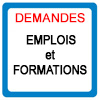
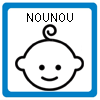
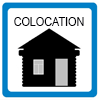
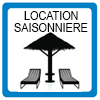

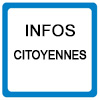
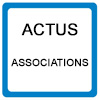
associations, postez vos actualités

participez au courrier des lecteurs
La Guyane c’est ici
La qualité de l’Air avec
ATMO
Photothèque

Lancements 2022
Vol 259 Ariane 5



